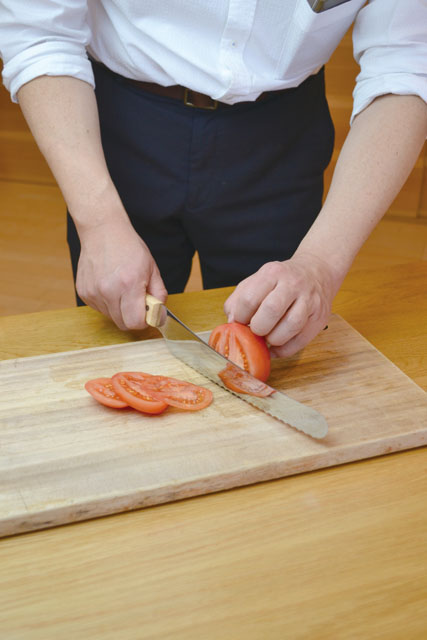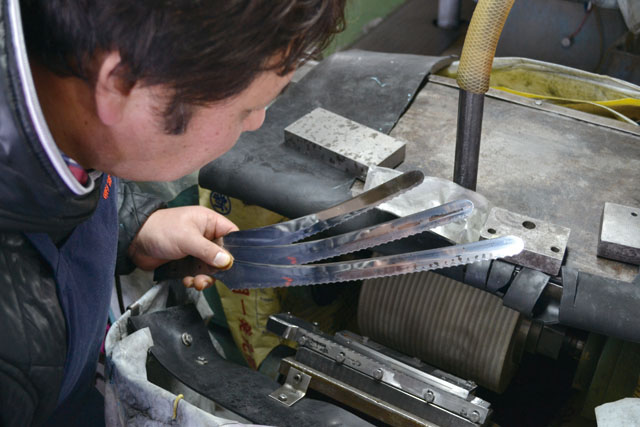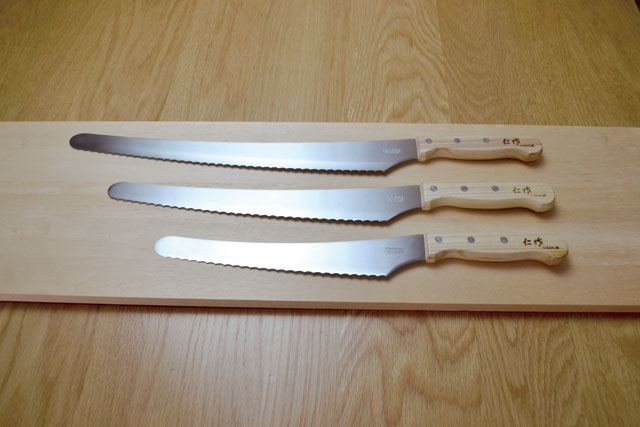Rethinking cutting wavy blades

“Push to cut” or “Pull to cut”, you can cut either way.
A “new wave blade” knife that realizes it.
| Number | No.3000(S) No.3010(M) No.3020(L) |
|---|---|
| Product name | Tomita style wavy blade knife. |
| サイズ | (S) Blade long:245mm total long:375mm (M) Blade long:305mm total long:440mm (L) Blade long:365mm total long:500mm |
| Material | Blade: 420J2 Grip: natural wood |
| JAN | (S)4986956030000 (M)4986956030109 (L)4986956030208 |
 企画意図
企画意図
Our company has been cultivating the technology of applying wavy edge processing to cutlery since its foundation.
We have been manufacturing and selling the product for a long time.
Using that technology, we reconsidered the structure of the wavy blade and reconfigured its form, shape, and method of construction.
We have developed a “new wave blade” with excellent sharpness.
Patent pending
 The cutting direction of the wavy blade is either “push” or “pull”.
The cutting direction of the wavy blade is either “push” or “pull”.
We assume that the user can adjust and select the angle for cutting at will only in the “push” direction, and wondered if we could make the angle suitable for cutting even in the “pull” direction.
The blade surface that touches the object with the cutting motion of the wavy blade is divided into two parts, “push” and “pull”, and the corresponding two arcs are connected to form one arc.
The “new wave blade” is formed by connecting them continuously (patent pending).

Technical manufacturing points
Through development, it was found that a difference of only about 0.2 mm in the width, height, depth, and angle of the arc that forms the wavy edge changes the cutting force.
We produced and experimented with more than 100 types of samples, and by selecting the one with the optimum value, we succeeded in quantifying a “good wavy blade.”
In addition, since it was found that there is a clear difference in the cutting force depending on the finishing method, a method of manually processing the blade by skilled workers was established instead of mechanical processing. Thanks to these, the good sharpness of the “new wave blade” can be realized.

 Small(240mm)
Small(240mm)